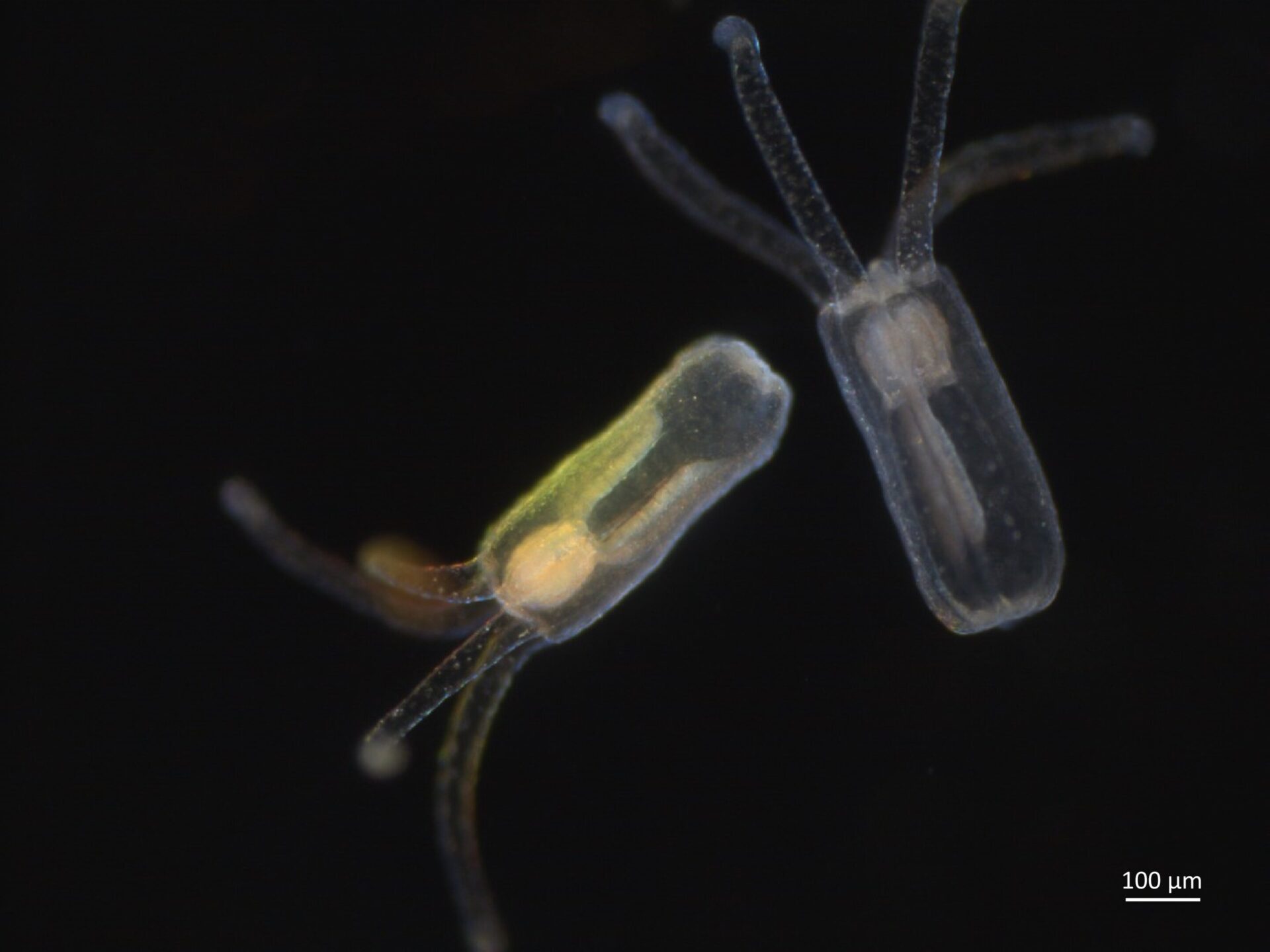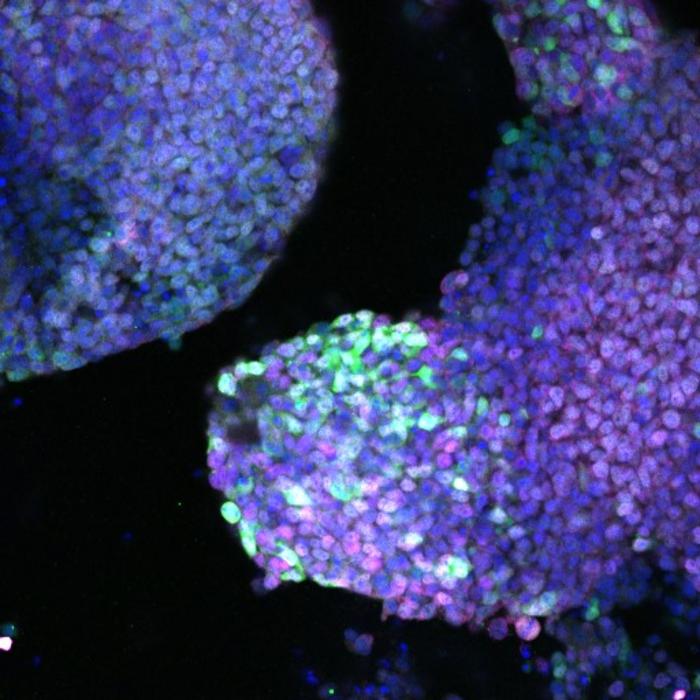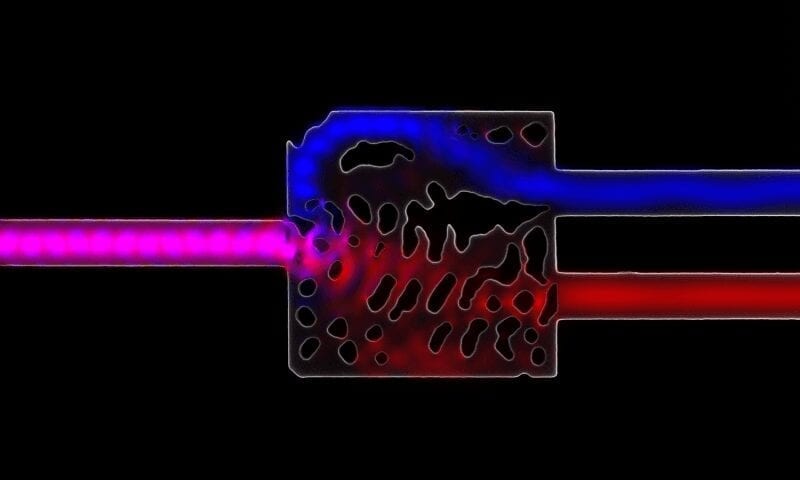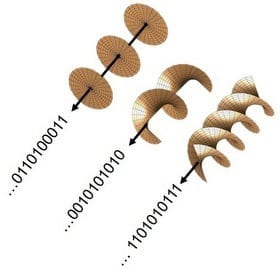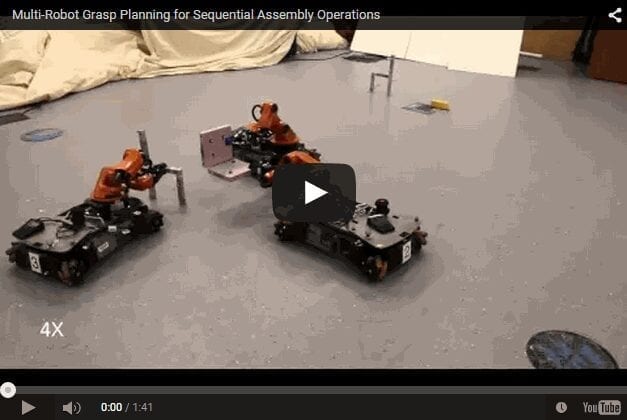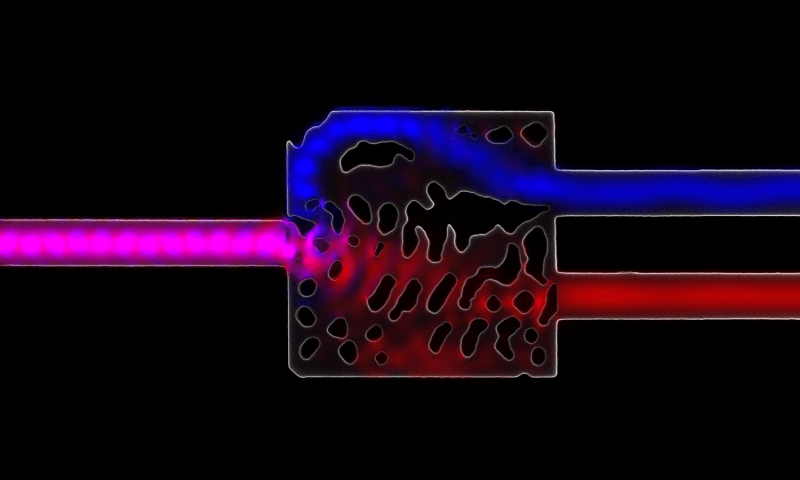
Stanford electrical engineer Jelena Vuckovic wants to make computers faster and more efficient by reinventing how they send data back and forth between chips, where the work is done.
In computers today, data is pushed through wires as a stream of electrons. That takes a lot of power, which helps explain why laptops get so warm.
“Several years ago, my colleague David Miller carefully analyzed power consumption in computers, and the results were striking,” said Vuckovic, referring to electrical engineering Professor David Miller. “Up to 80 percent of the microprocessor power is consumed by sending data over the wires – so called interconnects.”
In a Nature Photonics article whose lead author is Stanford graduate student Alexander Piggott, Vuckovic, a professor of electrical engineering, and her team explain a process that could revolutionize computing by making it practical to use light instead of electricity to carry data inside computers.
Proven technology
In essence, the Stanford engineers want to miniaturize the proven technology of the Internet, which moves data by beaming photons of light through fiber optic threads.
“Optical transport uses far less energy than sending electrons through wires,” Piggott said. “For chip-scale links, light can carry more than 20 times as much data.”
Theoretically, this is doable because silicon is transparent to infrared light – the way glass is transparent to visible light. So wires could be replaced by optical interconnects: silicon structures designed to carry infrared light.
But so far, engineers have had to design optical interconnects one at a time. Given that thousands of such linkages are needed for each electronic system, optical data transport has remained impractical.
Now the Stanford engineers believe they’ve broken that bottleneck by inventing what they call an inverse design algorithm.
It works as the name suggests: the engineers specify what they want the optical circuit to do, and the software provides the details of how to fabricate a silicon structure to perform the task.
“We used the algorithm to design a working optical circuit and made several copies in our lab,” Vuckovic said.
“Our manufacturing processes are not nearly as precise as those at commercial fabrication plants,” Piggott said. “The fact that we could build devices this robust on our equipment tells us that this technology will be easy to mass-produce at state-of-the-art facilities.”
The researchers envision many other potential applications for their inverse design algorithm, including high bandwidth optical communications, compact microscopy systems and ultra-secure quantum communications.
Read more: Breakthrough brings optical data transport closer to replacing wires
The Latest on: Optical transport
[google_news title=”” keyword=”Optical transport” num_posts=”10″ blurb_length=”0″ show_thumb=”left”]
via Google News
The Latest on: Optical transport
- IATA Survey Reveals Reduction in Baggage Mishandlingon May 9, 2024 at 2:05 am
The International Air Transport Association released a global progress report on the implementation of baggage tracking.
- Mexico's Megacable, Nokia announce successful data transmission test in connectivity planon May 8, 2024 at 2:20 pm
Mexican telecommunications company Megacable said on Wednesday it executed a successful long-distance optical transmission test with Finnish telecom equipment supplier Nokia as it aims to scale up the ...
- ADTRAN Holdings, Inc. (NASDAQ:ADTN) Q1 2024 Earnings Call Transcripton May 8, 2024 at 5:50 am
These customers ideally want to buy in-home networking solutions, business networking solutions, fiber access platforms, optical transport platforms, network automation software and cloud-based ...
- Toshiba, PacketLight Showcase Quantum Key Distribution over DWDM Technologyon May 7, 2024 at 11:17 pm
PacketLight Networks, a leading provider of DWDM and OTN equipment, has successfully demonstrated quantum key distribution (QKD) over DWDM links with Toshiba Digital Solutions Corporation (Toshiba), a ...
- EQS-News: Mynaric selected by Rocket Lab for Space Development Agency’s Tranche 2 Transport Layer – Beta Programon May 7, 2024 at 7:00 am
to supply free space optical terminals for the Space Development Agency’s (SDA) Tranche 2 Transport Layer (T2TL) - Beta program. Rocket Lab was awarded the 18-vehicle program in January 2024. The ...
- Mynaric Selected by Rocket Lab for Space Development Agency's Tranche 2 Transport Layer - Beta Programon May 7, 2024 at 5:15 am
Laser Communications Manufacturer Expands Customer Roster LOS ANGELES, CA / ACCESSWIRE / /Mynaric (NASDAQ:MYNA)(FRA:M0YN), a leading provider of industrialized, cost-effective and scalable laser ...
- Optical Line Terminals not Eligible for Concessional Duty rate: CAAR Mumbaion May 7, 2024 at 3:09 am
The Customs Authority of Advance Ruling in Mumbai deliberated on the eligibility of Optical Line Terminals (OLTs) for a concessional Basic Customs Duty (BCD) rate of 10%. Nokia Solutions and Networks ...
- Ekinops welcomes EUVIC as Strategic Optical Transport Channel Partneron May 6, 2024 at 9:00 am
EKINOPS (Euronext Paris - FR0011466069 – EKI), a leading supplier of optical transport and enterprise connectivity solutions, today announced a distribution partnership with EUVIC to help bring more ...
- National Physical Lab and ESA developing optical PNT systems for spaceon May 6, 2024 at 12:03 am
The UK’s National Physical Laboratory (NPL) is working in collaboration with the European Space Agency’s Navigation Innovation Support Programme (NAVISP) and the UK Space Agency (UKSA) to develop the ...
- Optical Transport Network Equipment Market Set for Robust 9.2% CAGR Surge Over 2022-2032on May 2, 2024 at 7:33 pm
The optical transport network equipment market refers to the market for devices and solutions used in optical communication networks. OTN is a high-speed, high-capacity telecommunications network ...
via Bing News




